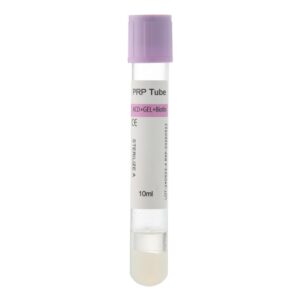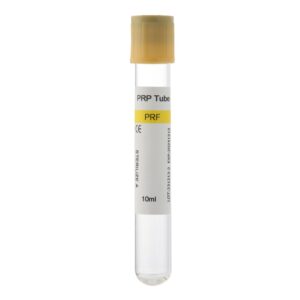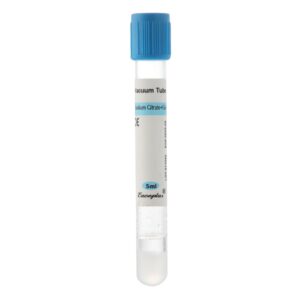PRP After Tooth Extraction. In the evolving landscape of dental surgery and patient care, the demand for advanced regenerative solutions is at an all-time high. Among the most promising innovations is the application of Platelet-Rich Plasma (PRP) after tooth extraction. For laboratory personnel and medical consumable distributors, understanding the nuances of PRP technology is paramount to supplying dental professionals with superior products that enhance patient outcomes.
How PRP Transforms Post-Extraction Recovery
Platelet-rich plasma (PRP) is an autologous concentrate of platelets in a small volume of plasma. The practitioner derives it from the patient’s own blood, drawing the blood and then centrifuging it to separate the platelets from other blood components. This process yields a concentration of platelets that is three to five times greater than that of normal blood. These platelets are rich in growth factors, which are essential for tissue regeneration and repair. When applied to a tooth extraction site, PRP initiates a cascade of healing processes. The concentrated growth factors stimulate the regeneration of soft tissues and bone. This leads to a host of benefits for the patient.
Clinical studies have demonstrated that the use of PRP in the alveolar socket after tooth removal can significantly improve soft tissue healing and enhance bone formation in the initial period. This leads to accelerated healing, reduced postoperative pain and discomfort, and a lower risk of complications such as infection. By harnessing the body’s innate healing capabilities, PRP therapy offers a natural and effective way to improve the recovery process following dental extractions. For dental practices, this translates to higher patient satisfaction and a reputation for providing advanced, patient-centric care.
Conclusion
The efficacy of PRP is directly linked to the quality of the preparation. A higher concentration of viable platelets results in a more potent release of growth factors, leading to more robust and predictable healing. This is where the choice of a PRP preparation system becomes critical. A system that ensures a high platelet yield and purity is essential for achieving optimal clinical outcomes. As a distributor or laboratory professional, providing a reliable PRP system is key to empowering dentists to deliver the best possible care. For those seeking to provide top-tier regenerative solutions, exploring the product specifications on the Siny PRP website can offer valuable insights.
The Crucial Role of a Superior PRP System
PRP preparation systems vary widely in quality. A premier PRP kit should guarantee sterility, consistency, and a high platelet recovery rate to ensure the best possible patient outcomes. Key components to look for in a quality PRP kit include sterile blood collection tubes containing an appropriate anticoagulant and a separating gel. The separating gel plays a vital role in creating a distinct barrier between the red blood cells and the platelet-rich plasma during centrifugation, ensuring the purity of the final product.
The centrifuge itself is another critical component. Dental clinics have options ranging from compact tabletop models to refrigerated and high-speed centrifuges. The choice of centrifuge should be based on the specific needs of the practice, considering factors like speed, capacity, and functionality. Investing in a centrifuge that is compatible with the chosen PRP kits and provides consistent results is paramount. Furthermore, a reputable supplier will provide comprehensive training and support for the use of their kits, ensuring that laboratory and clinical staff can properly utilize the system to its full potential. Inconsistent or unreliable suppliers can lead to delays and affect patient trust.
The PRP Application Process Following Tooth Extraction
For laboratory personnel and distributors, understanding the clinical application of PRP is essential for providing effective support to dental professionals. The dentist performs the process in a straightforward manner and easily integrates it into the tooth extraction procedure. It begins with a small blood draw from the patient, similar to a routine blood test. The practitioner places the collected blood into a specialized PRP tube from a high-quality kit.
The tube is then placed in a centrifuge, which spins at high speeds to separate the blood components. This centrifugation process isolates the platelet-rich plasma from the red blood cells and platelet-poor plasma. Once the dentist prepares the PRP, they can apply it immediately. After removing the tooth, the dentist places the PRP directly into the empty socket. The PRP can be in a liquid form or mixed with bone graft material to create a more viscous consistency.
This simple and efficient process adds minimal time to the overall extraction procedure but offers significant benefits in terms of healing and patient comfort. By providing a PRP system that is both effective and user-friendly, you can help dental clinics enhance their surgical offerings and improve the patient experience. To learn more about how Siny PRP can integrate into your clinical offerings, we invite you to contact our team of specialists.
FAQs
Q1: What are the primary advantages of using PRP after a tooth extraction?
A1: The primary advantages of using PRP after a tooth extraction include accelerated healing of both soft tissue and bone. Reduced postoperative pain and swelling, and a lower risk of infection and complications like dry socket.
Q2: How does the quality of a PRP kit impact the clinical outcome?
A2: The quality of a PRP kit is crucial as it directly influences the concentration and purity of the platelets. A high-quality kit will yield a higher concentration of viable platelets. This, in turn, releases a greater amount of growth factors, leading to more effective and predictable tissue regeneration.
Q3: Is the process of preparing PRP complicated for clinical staff?
A3: The process of preparing PRP is relatively straightforward and can be easily learned by clinical staff. It involves a simple blood draw and a centrifugation step. With proper training, which a good supplier should provide, dental teams can efficiently prepare and apply PRP during routine procedures.
Q4: Can PRP be used in other dental procedures besides tooth extractions?
A4: Yes, PRP has a wide range of applications in dentistry. Clinicians commonly use it in bone grafting procedures to promote bone growth for dental implants and in periodontal regeneration to treat gum disease. And in various other oral surgeries to enhance healing and shorten recovery time.
Summary
In conclusion, the integration of Platelet-Rich Plasma therapy into post-extraction dental care represents a significant advancement in patient treatment and recovery. For laboratory professionals and medical consumable distributors. The opportunity lies in providing dental practitioners with the highest quality PRP systems that deliver consistent and reliable results. By understanding the science, the application process, and the critical factors in product selection, you can empower your clients to offer superior patient care. The right partnership with a dedicated supplier is the cornerstone of this success. It ensures access to premium products, comprehensive support, and the latest innovations in regenerative medicine. To elevate your product offerings and partner with a leader in the field, explore the advanced solutions available on the Siny PRP website or contact us today to discuss how we can meet your specific needs.





